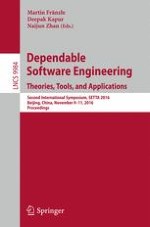This book constitutes the refereed proceedings of the Second International Symposium on Dependable Software Engineering: Theories, Tools, and Applications, SETTA 2016, held in Beijing, China, in November 2016.
The 17 full papers presented together with 3 short papers were carefully reviewed and selected from 58 submissions. The aim of the symposium is to bring together international researchers and practitioners in the field of software technology. Its focus is on formal methods and advanced software technologies, especially for engineering complex, large-scale artifacts like cyber-physical systems, networks of things, enterprise systems, or cloud-based services.
